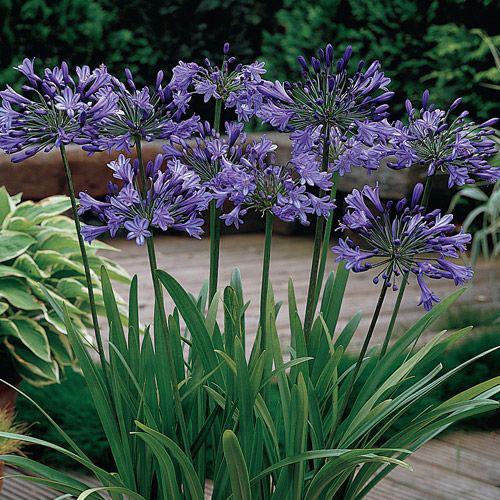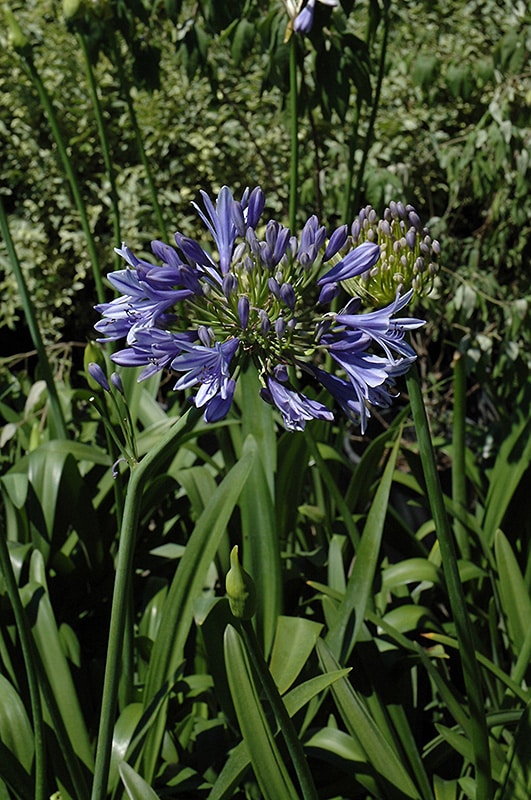Agapanthus Treatment Tips for Lush and Vibrant Flowers
Agapanthus Treatment Tips for Lush and Vibrant Flowers
Blog Article
Grasping the Art of Agapanthus Care: Vital Actions for Healthy And Balanced Development and Lively Blossoms
In the realm of cultivation, the growing of agapanthus stands as a gratifying undertaking for those who look for to support these stylish flowering plants. From selecting the right selection to grasping pruning techniques, the trip in the direction of growing growing agapanthus plants is complex and holds the essential to opening the full possibility of these organic treasures.

Picking the Right Agapanthus Range

When selecting the right Agapanthus range for your yard, take into consideration aspects such as environment viability, flower shade, and growth practice. In addition, consider the climate in your region to make sure the Agapanthus selection you choose can thrive in your details conditions. Comprehending the growth routine of different Agapanthus varieties is vital for proper positioning within your yard.
Perfect Growing Problems
Taking into consideration the optimum environmental demands is vital for successful Agapanthus cultivation. Agapanthus prospers in well-draining soil with a slightly acidic to neutral pH level. When growing, choose a place that obtains complete sunshine to partial color. In hotter environments, giving some afternoon color can stop scorching of the fallen leaves. Agapanthus plants are sensitive to chilly temperature levels and should be shielded from frost during cold weather.
To ensure healthy development and vibrant blooms, plant Agapanthus light bulbs at a depth of about 2-4 inches and space them 8-12 inches apart. Including natural issue, such as compost, to the dirt can boost drain and fertility, promoting durable root development. Mulching around the base of the plants helps keep dampness and suppresses weed growth. Routine watering is important, specifically throughout the growing period, to maintain the dirt regularly moist but not waterlogged.
Watering and Fertilizing Tips
Keeping proper dampness degrees and supplying vital nutrients are essential components in the care program for Agapanthus plants. When it comes to sprinkling Agapanthus, it is critical to strike an equilibrium. These plants favor consistently moist soil but are prone to root rot if overwatered.
Feeding Agapanthus is important for promoting healthy development and prolific flowers. Use a balanced plant food, such as a 10-10-10 formula, in the early springtime as new growth emerges. By adhering to these check my reference watering and fertilizing pointers, you can guarantee your Agapanthus plants grow and create Visit Website vibrant, resilient flowers.
Pruning Techniques for Agapanthus
Trimming Agapanthus plants at the ideal times and with proper strategies is crucial for keeping their wellness and advertising optimal growth and flowering. The excellent time to prune Agapanthus is in late winter season or very early springtime prior to brand-new growth emerges.
For flowered stems, wait till the blossoms have actually withered and after that trim them back to the base. This not just cleans up the plant's appearance however additionally urges the growth of new blossom buds. Deadheading invested blossoms can likewise redirect the plant's power into generating more blossoms as opposed to setting seeds. Nevertheless, if you wish to accumulate seeds for propagation, leave some flowers to mature and completely dry on the plant.
Remember to make use of tidy, sharp tools to make accurate cuts and minimize the danger of introducing conditions. Agapanthus. Routine pruning will certainly assist maintain your Agapanthus looking healthy and cool while making certain a bountiful display of beautiful blooms
Dealing With Usual Pests and Illness
After ensuring appropriate pruning techniques for Agapanthus, it is vital to deal with usual bugs and illness that can impact the health and vigor of these plants. One usual pest that affects Agapanthus is the Agapanthus gall midget.
Additionally, Agapanthus plants can experience from root rot if they are grown in poorly draining pipes dirt. By being attentive and taking prompt action against parasites and illness, you can aid your Agapanthus plants grow and produce vivid flowers. Agapanthus.

Conclusion
To conclude, understanding the art of agapanthus treatment involves picking the appropriate selection, providing excellent growing conditions, appropriate watering and feeding, proper trimming techniques, and attending to typical parasites and illness. By complying with these crucial steps, you can make sure healthy and balanced growth and dynamic blooms for your agapanthus plants. Bear in mind to frequently monitor and maintain your plants to advertise their total health and longevity.
To make certain healthy development and the original source lively blossoms, plant Agapanthus bulbs at a deepness of about 2-4 inches and space them 8-12 inches apart. By adhering to these watering and feeding suggestions, you can guarantee your Agapanthus plants prosper and produce vivid, lasting blooms.
One typical insect that influences Agapanthus is the Agapanthus gall midge. In addition, Agapanthus plants can experience from origin rot if they are grown in poorly draining soil. By adhering to these necessary actions, you can make sure healthy and balanced development and vibrant blooms for your agapanthus plants.
Report this page